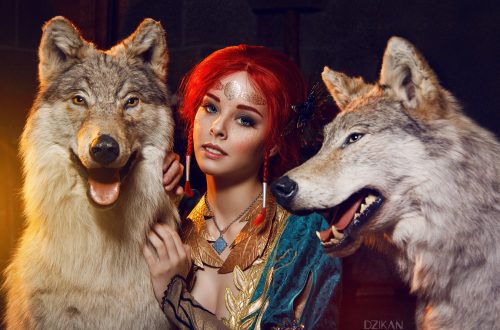Gender Expression in Cosplay: Art, Embodiment, and the Power of Collective Gender Performance
Abstract
In recent years, cosplay has gained international recognition as a performance art in which fans dress as fictional characters from manga, anime, comics, or games. While cosplay is often mentioned as a method of understanding gender-specific interactions and gender performance but scholars seldom consider how cosplay influences gender. Combining the creation of cultural perspective and interactionist theories of gender, I describe how to cosplay participants display gendered sensibilities using conventionalized body actions and changes. Contrary to the predominant attention to individual cosplayers I demonstrate how makeup artists, photographers, and photo editors all contribute to the success of gender play in cosplay. Contrary to simplistic accounts of donning hyper-masculinity/hyper-femininity, I argue that cosplay participants’ pursuit of authenticity makes singular orientation to the sex category insufficient and demands a version of masculinity/femininity that also attends to the character’s personality. My findings are situated in the realm of cosplay’s art evaluation and production. I invite scholars to examine my research as a theoretical tool that helps us to pay attention to the collective achievement of gender-based embodiment. This multi-authorship concept is often ignored.

Introduction
Cosplay, which is a portmanteau between “costume” and “plays,” is an essential part of the worldwide ACG (anime, comic/manga, and game) fandom (Winge 2006; Kelts 2007). In China, the phenomenon first emerged in the form of ACG conventions during the mid-1990s and has seen rapid growth in the last decade, and has a presence of the internet (Liu 2006; Wang 2010). Cosplay is a form of fan art that combines cultural consumption with production, with a high-interactive process for circulation. During cosplay, fans are co-authors with fictional characters as they put on costumes, wigs, and makeup, often with the help of a group composed of makeup artists, photographers, as well as photo editors (Fung and Pun 2016; Ruan 2018). On the internet users post, share and review cosplay photos authored by each co-author, while evaluating their “authenticity” about their commitment and respect for their source characters (Matsuura and Okabe 2015; Rahman et al. 2012).
In addition, the “play” in cosplay is not only role play but also gender play: the character that cosplayers strive to impersonate can be of another gender and gender-crossing is a common practice within the cosplay world (Norris and Bainbridge 2009). Unlike other gender-bending communities, gender-crossing cosplayers–sometimes called “crossplayers”–bend their gender for their love of characters, rather than for an explicit political agenda or for externalizing an internal gender identity that does not match their sex assigned at birth (Lamerichs 2011; Leng 2013; Tompkins 2019). While noting differences in motivation certain scholars believe that cosplay shares apparent similarities with drag, and therefore can be considered to embody gender performance (Bainbridge and Norris 2013; Bainbridge and Norris 2011; Leng 2013; Norris and Bainbridge 2009). Some take an even more radical view. Some adopt a more radical position.
As a subcultural practice, How can cosplay assist us to pay closer awareness to the unnoticed aspects of the achievement of gender? Answering this abstract theoretical issue requires an investigation of the processes that create gender embodiment in cosplay–only then can we take our findings from a specific case to the more commonplace arenas that we encounter every day and determine the possibility that similar mechanisms are in play but aren’t being recognized by the theoretical lens we have in place. The scholarly literature on cosplay hasn’t provided any concrete examples of how people engage in cosplay. This is not the only insufficient information regarding how cosplayers perform gender roles despite having been recognized as gender-neutral (Kirkpatrick 2015 for critiques). With the theoretical insight these studies can provide the gap shouldn’t only concern cultural scholars and specialists in the globalization of Japanese ACG culture as well as feminist sociologists as well as social theorists searching for new ways to conceptualize gender.
This article draws upon interviews with cosplay players in China which includes makeup artists, photographers, and editors, to place cosplay within the “art realms” of production and assessment (Becker 2008). I examine the way that fictional characters’ gendered images are reproduced using human bodies. I also look at the impression-managing techniques that are employed by participants to represent various genders. In contrast to the predominant attention paid to cosplayers, in this article, I demonstrate how the supporting team is equally important to the effectiveness of cosplay’s gender identity In addition to the fact that cosplayers have to communicate gendered sensitivities through facial expressions and poses but the support crew must infuse the messages of cosplayers into their physical appearance. Based on the emotions that cosplayers evoke in the audience, these two kinds of bodywork–body modification as well as body movement can create a gendered perception among the audience. But a singular orientation to gender is not enough to “authentically” portray an individual. Instead of donning hyper-masculinity/hyper-femininity, participants display an additional orientation to the personality category and strive to stage a version of masculinity/femininity consistent with the character’s placement into these categories.
My empirical findings are centered around the collective production of gender embodiment in the Chinese cosplay scene, and might not be easily transposable to other contexts outside of the ACG fandom, they provide a starting point to think theoretically about how cosplay as a method of heuristics can enrich social theories. As I will elaborate at the end of this article, insofar as theory can be understood as hermeneutics and ways of looking at the world (Abend 2008), looking at gender as a cosplay (after decades of looking at gender as a drag) invites us to theorize gender as an artwork–collectively manufactured in its art worlds–whose multi-authorship is often obscured by neoliberal individualism. Cosplay could be utilized as a heuristic by integrating the theoretical perspectives of sociology (Goffman 1976, West and Zimmerman 1987), and sociology (Peterson and Anand 2004,). In this way, we can be alerted to the theoretical possibility that the seemingly solo-authored gender-based representations of the “authentic self” could be accompanied by a secret team of collaborators–even although they might not play the same roles, or do the same kinds of bodywork that their counterparts in cosplay groups do.
Cosplay: joining the scene
Despite the increasing popularity of cosplay on a global scale, research on cosplay is scarce (Kirkpatrick 2015; Leng 2013; Rahman and others. 2012). Some scholars are wondering if cosplay and animation offer new methods to conceptualize, analyze and analyze human activities (Silvio 2010, Manning and Gershon 2013; Silvio 2010), but much of the research about cosplay is focused on the reasons people play cosplay (Bainbridge, Norris 2013, Lamerichs 2011, Peirson Smith 2013; Rahman, et al. 2012; Tompkins 2019, Wang 2010; Winge 2006.) instead of how people interact. Unbalanced attention comes at an academic cost since it is only through looking at the latter that we can begin to understand the similarities and differences between the process of cosplaying an imaginary character such as Uchiha Sasuke from Naruto and the act of playing the abstract qualities of “hegemonic masculinity” in our everyday interactions. Becker (1953) famously illustrates that focusing on “why” can lead to pathologizing the activity under study and its participants, whereas the focus on “how” allows us to discover social processes that could be useful for understanding participation in other, apparently unrelated, actions.
Fair enough, the topic of gender-based performance is a prominent theme in this limited body of work. This is hardly shocking, considering that gender-crossing in cosplay is not just common, but also well-respected–if done successfully (Leng 2013). But the vast majority of the academic debate centers around whether cosplay subverts gender norms (Bainbridge and Norris 2013; Gn 2011; Lamerichs 2011; Loke 2016; Norris and Bainbridge 2009; Tompkins 2019). Many of these studies focus on cosplay’s significance in Butler’s (1990), theory of gender performativity. They also point out its embodied characteristics (e.g. Bainbridge and Norris 2013; Gn 2011, Bainbridge and Norris 2014). Gn 2011, Lamerichs 2014). Yet, they tend to be reticent regarding what the gender of the performer is embodied in cosplay. Sometimes, they simply characterize the performance as an individual, hyper-feminine/masculine displays. Leng (2013), p. 90, states that in her research on male-to-female cross-play, “men don’t just don femininity, they also display hyper-femininity whenever they crossplay as females. This exposes the socially constructed nature and enhances the gendered nature of these performances.” My research focuses on the mechanisms through which cosplayers represent gender and the gender divisions that enable it.

Cosplay’s motivations aren’t insignificant when it comes to understanding these processes. According to Winge (2006) states many people join in cosplay because they love the favorite of their characters as well as to socialize with others ACG fans. This shared passion is a major influence on cosplay. Cosplay should aim to express the cosplayer’s love for the source character. Cosplayers should “inhabit the character of a person both physically and mentally” (Norris and Bainbridge 2009), and not just dressed in extravagant costumes (Kirkpatrick (2015); Leng (2013)). Second, because cosplay facilitates interaction between fans, cosplayers continuously learn from and analyze their cosplay (Bainbridge and Norris 2013; Lamerichs 2011; Matsuura and Okabe 2015; Rahman et al. 2012). Thus, cosplay isn’t just a cosplay dyad of a character with a cosplayer, but a network of performers and viewers (Lamerichs 2014).
One of the most significant concerns in this performer-spectator system is authenticity. The quality of cosplay can be assessed on authenticity as a reflection of cosplayers ‘ affection for their character. For a long, cultural sociologists have held that authenticity isn’t inherent, but rather socially constructed that is recognized and achieved (Peterson 1999 2005; Hughes 2000). It must be performed in a staged, staged, and constructed. In cosplay, since authenticity is judged by “commitment and adherence to the character’s origins,” participants need to pay attention to the physical attributes of the character (e.g., costumes and makeup, etc.)) and the mimetic aspects (e.g. the body’s expressions and facial expressions) when they perform (Rahman and others. 2012 326; Norris & Bainbridge 2009). Otherwise, they may be seen as not making enough effort to reproduce the look and behavior of the original character (Lamerichs 2014). If a cosplayer does not portray themselves in the same manner as their chosen gender, it could be considered to be an imitation of the character (Leng 2013,). In light of the significance of authenticity, researching gender when cosplaying requires an interactionist lens that focuses on not just the way one expresses gender, but also how one does so collectively and reflexively with an eye on how their performance could be evaluated.



